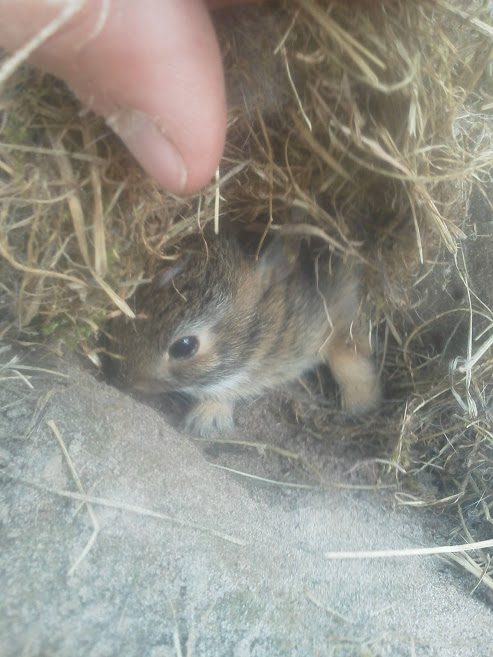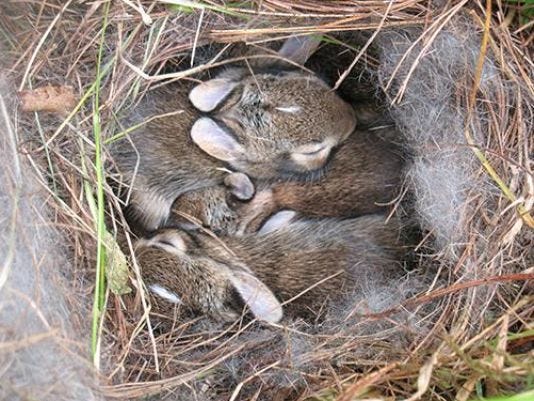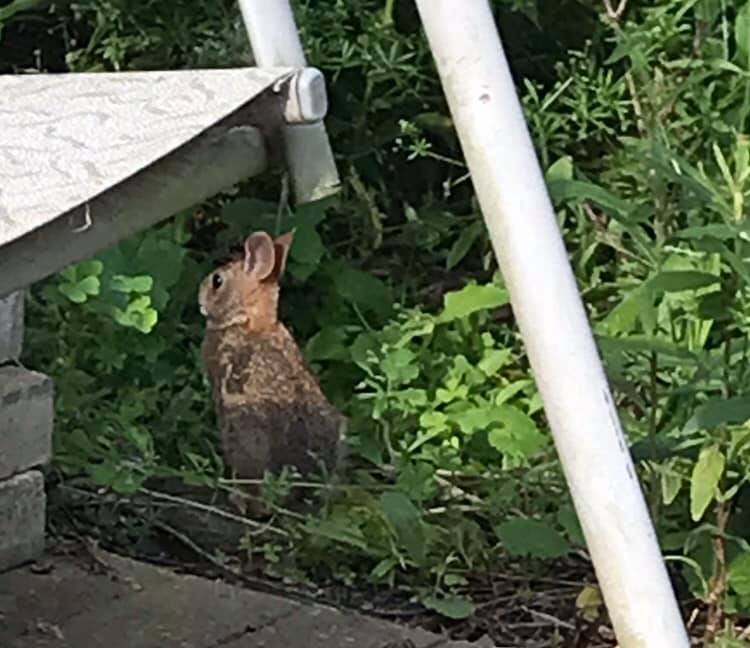
“All the world will be your enemy, Prince with a Thousand Enemies, and whenever they catch you, they will kill you. But first, they must catch you, digger, listener, runner, prince with the swift warning. Be cunning and full of tricks and your people shall never be destroyed.”
~Richard Adams, Watership Down
Nothing makes me smile more than seeing lots of bunnies hopping around and snacking on the dandelions in my yard. With the onset of the warmer weather, baby animals are making their arrival into the world, and rabbits are no exception. The mating season for rabbits is quite extensive running from March through September. It is not unusual to find nests of baby bunnies in your yard from early spring all the way through the summer.
All About Eastern Cottontail Rabbits

Size: 14-19 inches long (Female rabbits tend to be bigger than male rabbits.)
Weight: 1.8 – 4.4 lbs
Gestation Period: Anywhere from 25 – 35 days. They typically have between 1 – 7 litters per year with 1 – 12 kits (baby bunnies).
Although they call Eastern Cottontails, their habitat extends across the United States and into Canada, as well as all the way down into the Caribbean, throughout Central America, and into Northern South America.
In the wild, rabbits have a relatively short lifespan of 15 months. Mainly because rabbits are a major part of the food chain, hunted by a multitude of predators, such as foxes, weasels, coyotes, bobcats, minks, raccoons, great horned owl, barred owl, hawks, and snakes. Certain animals hunt for vulnerable nestlings such as raccoons, skunks, badgers, and opossums.
Recognizing Rabbit Nests

The first time I saw a rabbit’s nest was many years ago when my children were playing in their sandbox. They came running up to me and told me that the sandbox was “breathing”. I immediately had to investigate. The sand did indeed appear to be moving slightly. I lifted up the packed debris on top and found several small bunnies underneath. My heart absolutely melted. These tiny little kits were adorable. We decide that in the best interest of the bunnies, we should avoid the sandbox for a few weeks until the kits were gone.
Since rabbits breed all summer long, you can stumble upon a nest at any point, hidden in your yard. Although we found one in our sandbox, rabbit nests can often before in the grass. They usually appear to be dead patches in the grass. If you lift up the dead material on top, you will see the babies. Before mowing, it is a good idea to walk your lawn in search of these dead patches. If you find one, place some sort of marker, such as a flag to be sure not to mow over it.
Baby bunnies are born blind but begin to open them between 4 to 7 days. The mother rabbit will not sit in the nest but will most likely be close by and will return two a day to nurse. They begin to take short trips outside the nest around 12 -16 days. The kits will be weaned by 4-5 weeks and leave the nest completely around 7 weeks.

What To Do If You Find A Baby Bunny
- If the bunny has no visible injuries, leave it alone. The mother is often very nearby.
- Don’t touch the bunnies, they are easily stressed. However, in the event that they have been touched, the mother will not abandon them. This is a myth.
- If the bunny appears injured, call a wildlife rehabilitator. You can find a phone number of a local rehabilitator from either the DEC or your local veterinary office.
Did we forget anything? Have you discovered a bunny nest? We want to hear your story. Please share your thoughts with us by commenting below.